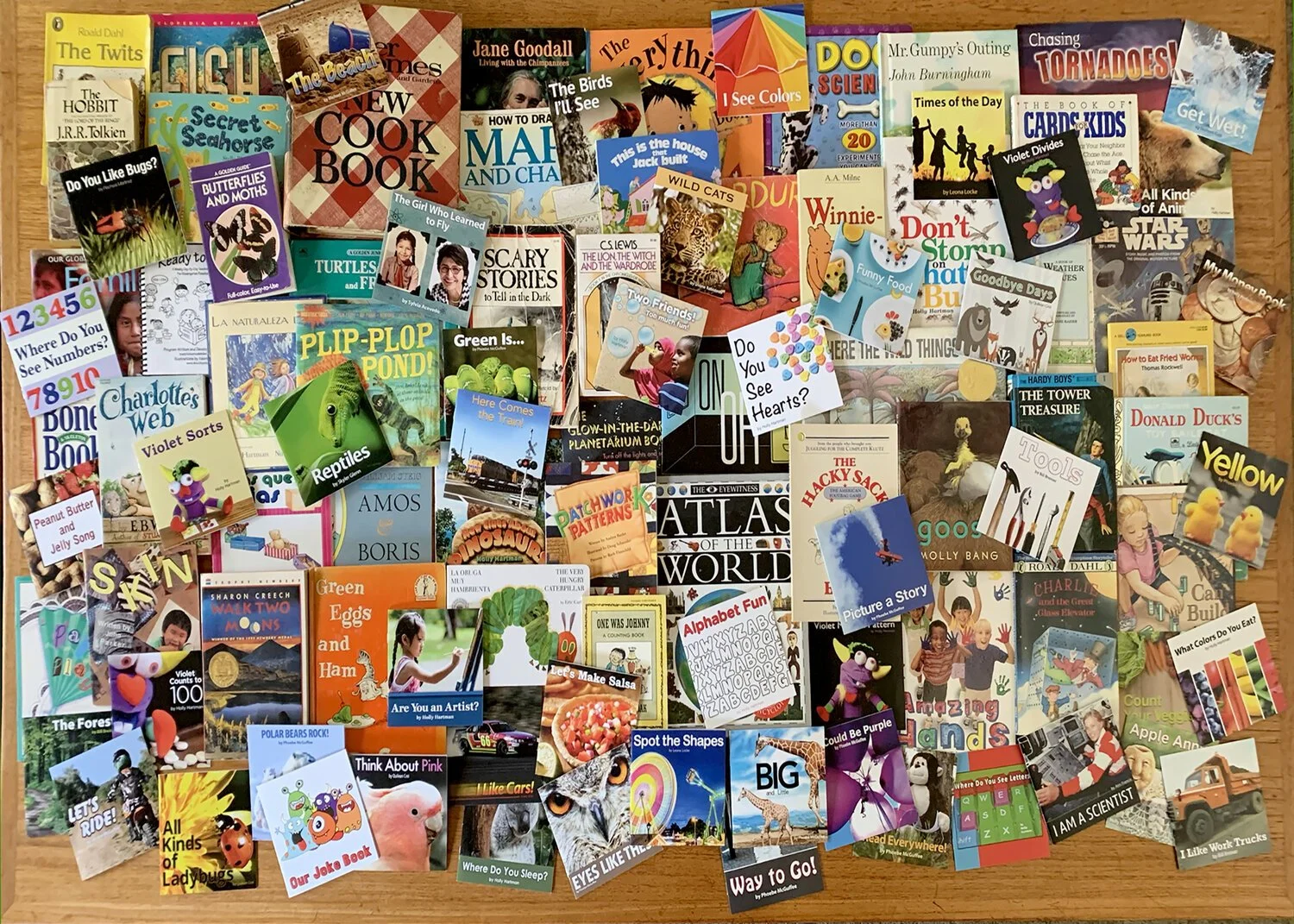The Optimum Number of Books
By Mark W.F. Condon, Unite for Literacy vice president
One hundred (100) is the optimum number of books in a young child’s home relative to them growing up to be a proficient, avid reader. Optimum means that having more books than 100 does not seem to add much more benefit when it comes to school reading success, but having less is detrimental.
Children in homes with fewer than 100 books tend to read less, and then naturally to have less discussions about what they read. And not surprisingly, those children score less well on reading tests than their peers who have 100 or more books and a habit of reading every day.
A key to help insure that children grow up to become readers is the combination of abundant book availability (with 100 books as a minimum) and the daily routine of self-selected book reading.
Another key is referred to as the “stock and flow” of books in a home. Stock is the number of books that are currently in the home and available for children to read at will. Flow is about the number of books that enter and exit children’s reach in their homes over time.
So, families can set children up to become successful readers by making sure there’s a continuous and abundant flow of books into their home. To overcome the expense of buying books, children and families can frequent a local library or bring home books from school to read for fun. Little Free Libraries and free digital libraries, like Unite for Literacy’s online collection of more the 600 books, are other great options.
What’s paramount is that children never run out of interesting or important books to read in their homes. Families that gather their literacy resources collectively to share, moving them from one home to another are ensuring both a comfortable and abundant stock and flow of books in their homes. If together, five homes can share a collection of 100 books by having 20 or so books in each location at any time, and willingly make individual books in their current collections available to the other families, then the recommended 100 books are effectively in each family’s home at a cost that can be more easily borne by sharing. Every child in a neighborhood can then be reading every day at home.
